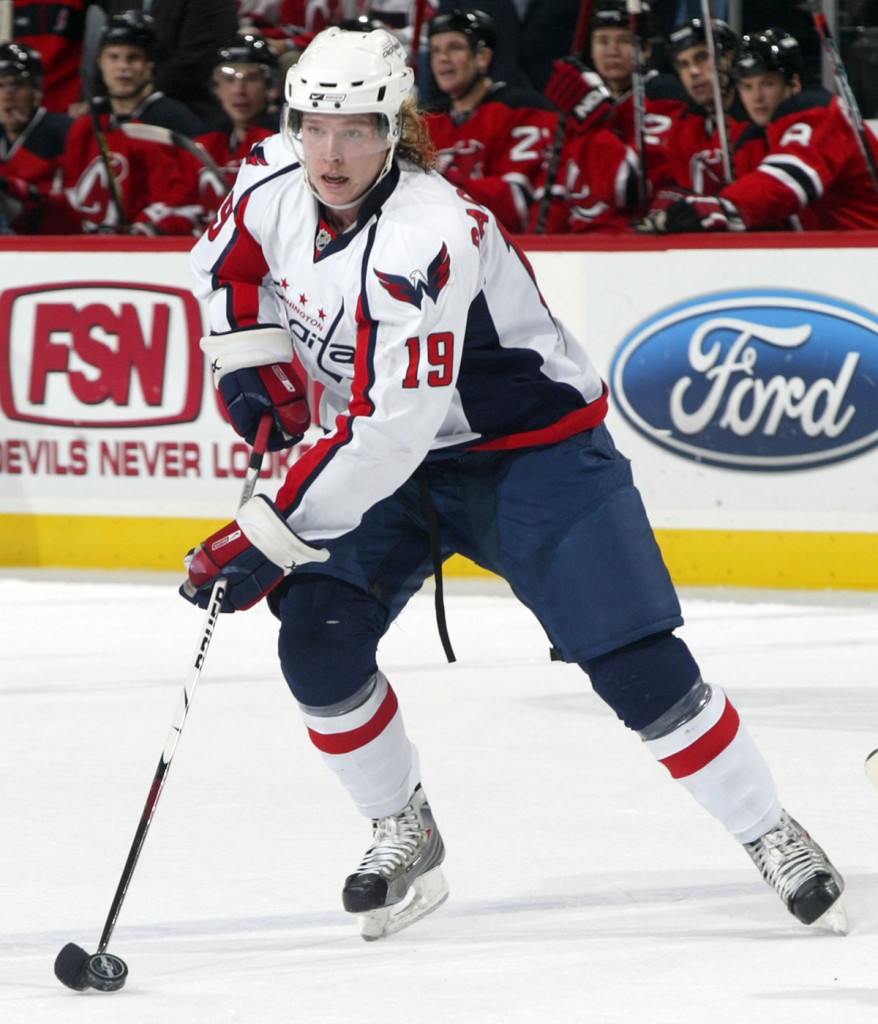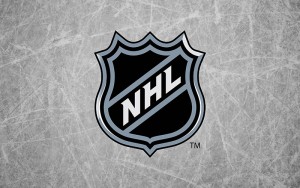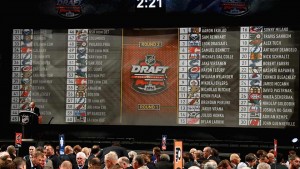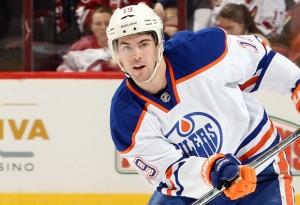So your Fantasy Hockey team looked great on paper right after the draft,but in the first full week of play they are failing to put up the numbers that you expected, right? Calm down for a second and remember that most teams are still only three or four games into the season and that there is still a lot of hockey that needs to be played before playoffs begin in April. So quit kicking yourself for passing on Nicklas Backstrom (pictured), who currently leads the NHL with 10 points in four games, and choosing Pavel Datsyuk instead, who has one point in three games. But if you did make that mistake, like I did, then remember that Datsyuk normally starts slow and usually gets the ball rolling big time around the middle of November. After scoring 97 points in each of his last two seasons, Datsyuk isn’t a guy that you want to give up on too soon. Still, one obvious problem for Fantasy Hockey GM’s is determining when to give up on a player who you had high expectations for and when you need to hold steady and hope that a player will rebound. 
One of the big reasons for slow starts is that players have to build chemistry with new linemates. Consider that Nicklas Backstrom leads the NHL in points right now and that his linemates, Alexander Semin and Alexander Ovechkin, each have nine points a piece. Also consider that these three guys have been playing on the same line off and on for the past two seasons. These guys already know each others tendencies and how to play together. Datsyuk, on the other hand, started the season with a new linemate in Johan Franzen and will now get another new linemate since Franzen will be out at least four months with a torn ACL. The truth is, after a busy offseason, most players are trying to adjust to new cities, new surroundings and new linemates. While some linemates click instantly, for most it takes time to work together and build that chemistry. But once it does click, then watch out.
So how can you better determine which players to drop or trade and which players to hold out on? Well, the first thing you need to know is that it is still very early in the season and those decisions can wait. Give your players 15-20 games to really get into the full swing of things. Most teams will have hit their stride by this point and it will give you a better marker of where your players stand in comparison to the rest of the league and your expectations.
As a Fantasy GM, you need to know the tendencies of your players, like Datsyuk, who historically starts slowly and builds momentum as the season progresses. Former Red Wing Mikael Samuelsson has three points in four games, but he also had a similar start last year posting 21 points in the team’s first 23 games. He scored half of his 40 points last year in the first quarter of the season. To stay on top of some of these stats, check out the game log from past seasons to see how your players progress through the year. Do they have a tendancy to start hot and then slow down, or vice versa? Or do they stay slow and steady all year long?
And make sure to avoid the player of the week. Do you really think that Matt Carle is going to put up four assists in every game this season? Sure, Carle put up 42 points with San Jose a few seasons back, but he has failed to live up to that billing since. So don’t rush out and trade away Brian Rafalski for Matt Carle because Rafalski will probably give you the better numbers in the long run even if he has gotten off to a slow start.
Adversely, make sure to be aware of line switches. Anyone remember Alex Burrows, the lucky duck who reaped the benefits of getting placed on the Sedin Twins’ line and tore up the latter half of the season last year? Almost any player can get hot and produce good numbers for a short stretch, but if you see a guy promoted to the top line and all of a sudden his numbers skyrocket, you can bet they will stay that way until he’s moved off of the top line.
Any player is capable of having a dreaded “off” season. Utilize the game log to determine how your players normally contribute. If things don’t quite add up, you may need to keep an eye on them and start stocking your watch list with possible replacements if current trends continue. Keep in mind the caliber of player you’re dealing with also. Jason Spezza still had 73 points in an “off” year last season. Down from 92 points the year before, Spezza’s 73 is still more than most players. At that point, it might be worth holding onto the star center even if he drops 20 points from the season before.
It’s finicky work to predict hot and cold streaks and try to determine if or when a player will step back up to superstar status. Regardless, remember that it is still early in the season at this point and that your players deserve a little bit of time to settle down and play to their true potential. If things haven’t improved by the middle-to-end of November, then it might be time to rethink your stategy.



Sooooo, you’re saying that I should NOT have dropped Eric Staal in favor of Wojtek Wolski?
Great guys… Little late, don’t you think? Thanks for NOTHING!
Now, that would just be plain silly